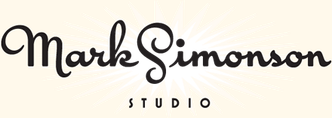Mark’s Notebook - Page 34
In honor of Valentine’s Day, Extensis has posted a silly little game called TYPEmatching wherein you attempt to find romantic match ups between common typefaces.
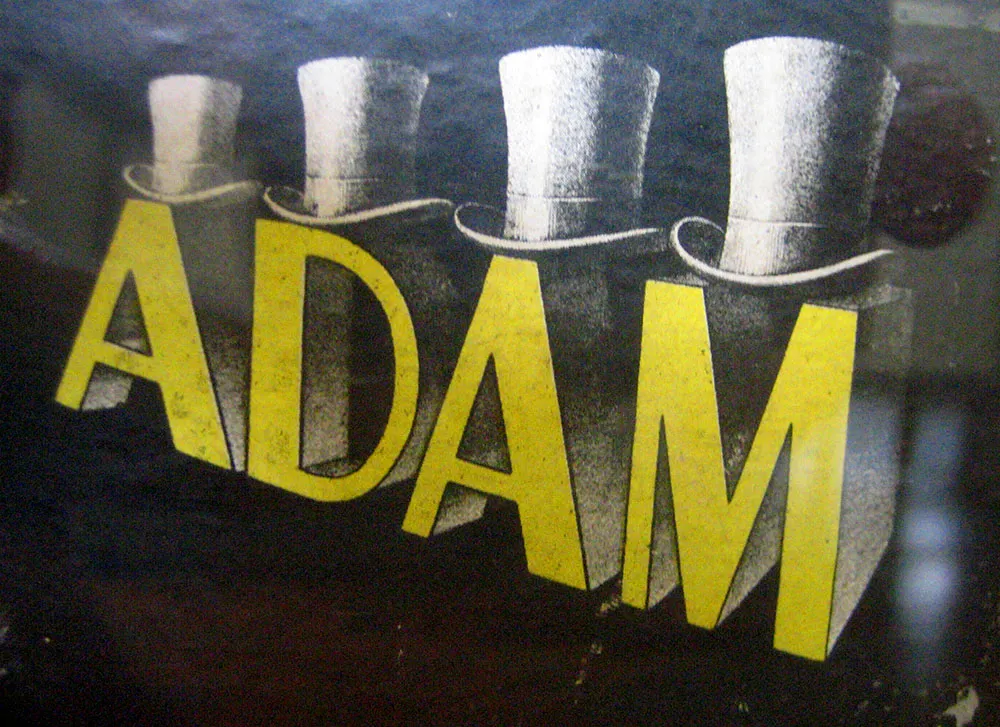
Logo on a hat box, seen in an antique store in Oneonta, New York, July 7, 2007. Those are some snappy caps.
I haven’t been posting much to Notebook lately because I’ve been, well, busy. The thing I’ve been busy with is this:
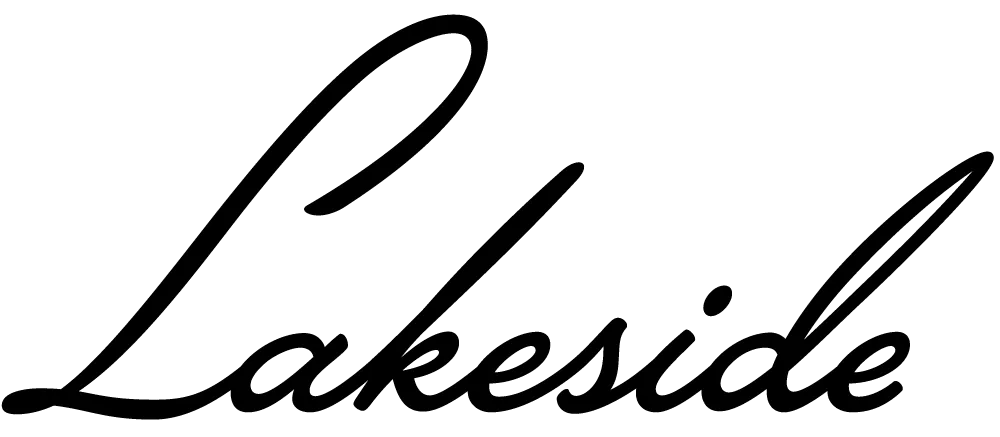
Lakeside is a script face I’ve been working on for the past two years. It was initially commissioned by an independent filmmaker for use in some film titles. It’s based on the hand-lettered titles of the classic 1944 film noir classic “Laura.”
An unusual feature of Lakeside is that it has three styles of capital letters suited to different uses:
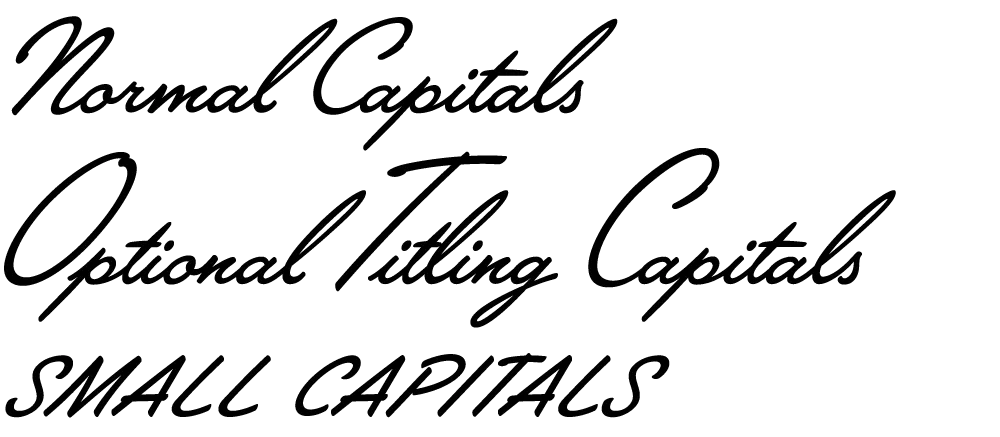
There are normal caps for, er, normal use; over-sized caps for a fancier appearance; and smaller, plainer caps for all-caps settings—something not normally possible with a script font like this.
Lakeside takes advantage of the OpenType format to put a virtual lettering artist at your fingertips. Here is the font with OpenType Contextual Alternates turned off and then on:
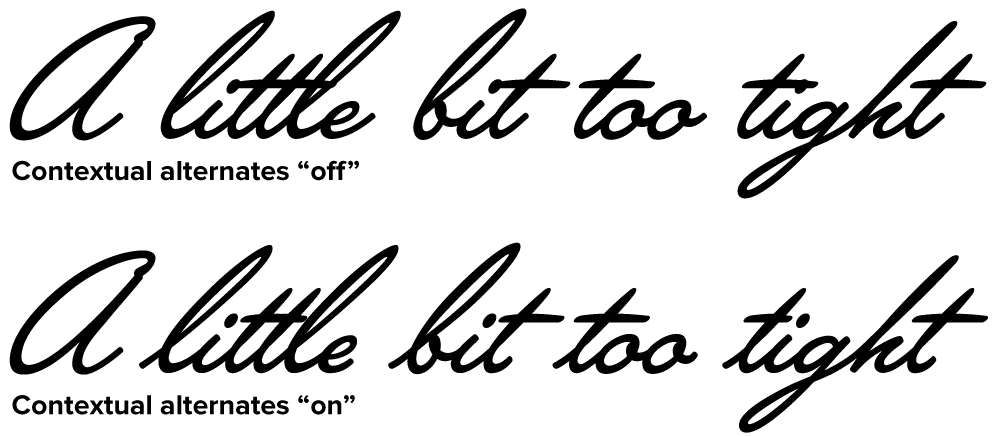
Notice how each letter tailors itself to its position within a word, using a different form depending on whether it comes at the beginning, middle or end. Notice also how the crossbar on the lowercase “t” seems to “know” about adjacent letters and adjusts its width appropriately. (It’s not actually “a little bit too tight,” it’s just that those words are good for showing how the magic works.)
For more information, see the Lakeside Specimen Sheet (496k PDF) and the Lakeside User Guide (1mb PDF).
Licenses for Lakeside can be purchased at Font Bros. Other venues will be added soon.
(Note: Last year I mentioned this font on Notebook when it was still under development. At that time, it was to be called “Launderette.” Unfortunately, that name was taken—twice—so I chose the name “Lakeside” instead.)
Ever notice how the font name “Arial” looks like a certain other word sometimes? (Via DaughterNumberThree)
This week, the radio program Studio 360 is airing a short interview with Gary Hustwit, director of the documentary film Helvetica. You can listen to it online.
If you haven’t seen the film, I highly recommend it. I saw it at TypeCon in Seattle this last August in an auditorium packed with fellow type geeks. Hard to beat that.
What’s more nerdy: Attending a performance of A Christmas Carol performed entirely in Klingon, or appearing in it? Whatever, it was a load of fun, and only three blocks away at the University of Minnesota St. Paul Campus Student Center. How could I not go?
So, you might well ask: WTF? Imagine if you will, Charles Dickens’ classic translated and interpreted by the Klingon Imperial Theater Company, hosted by a representative from the Vulcan Institute of Cultural Anthropology, and you’ll get some idea. If you’re still not with me, imagine a parody of the Christmas classic seen through the eyes of Trekkies. (Not that I would call myself a Trekkie.) (And not that Trekkies call themselves “Trekkies.”)
The production, put on by Commedia Beauregard, was cleverly written and very entertaining. The audience, not too surprisingly dominated by Star Trek fans, was in stitches most of the time. While the performance was entirely in the made-up Klingon language (except for occasional commentary by the Vulcan), English subtitles were projected on a screen next to the stage.
I managed to sneak a few (flashless) photos of the performance. Here is the scene in which SQuja’ (Scrooge), on the left, is visited by Kahless Past (Christmas Past). Notice that the ghost is the “old style” Klingon:
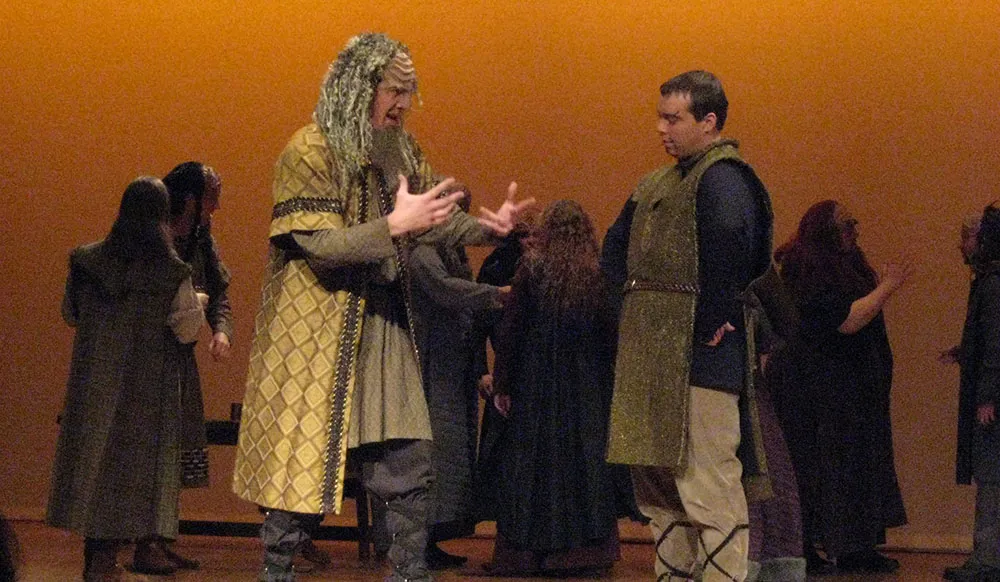
Here is a scene of happier times from SQuja’s youth, in which everyone is having a grand old time trying to kill each other:
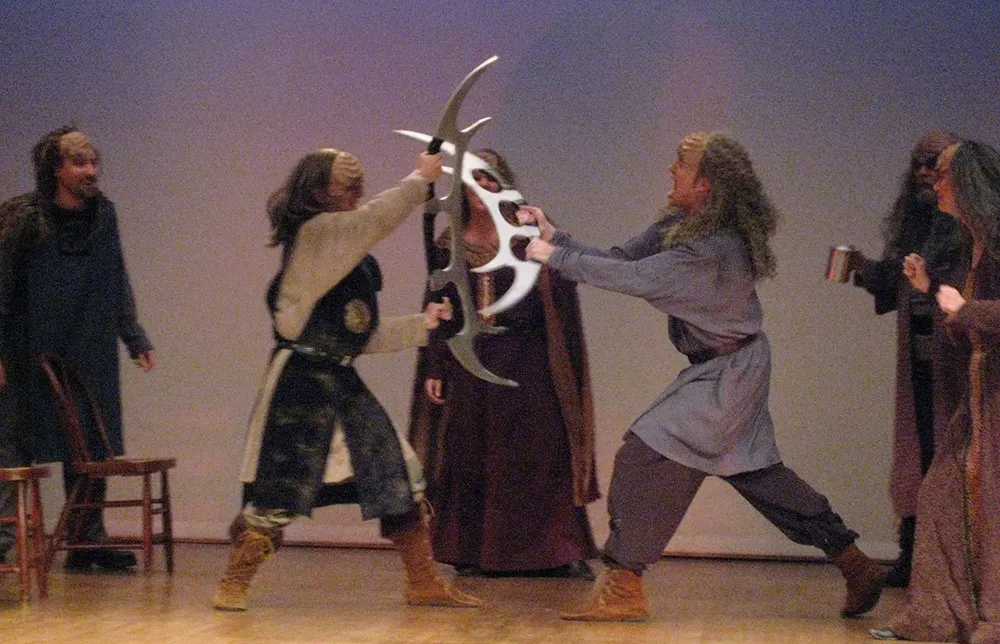
Like the Dickens original, SQuja’ sees what a fool he has been, for seeking gold rather than honor in battle, and vows to change his ways:
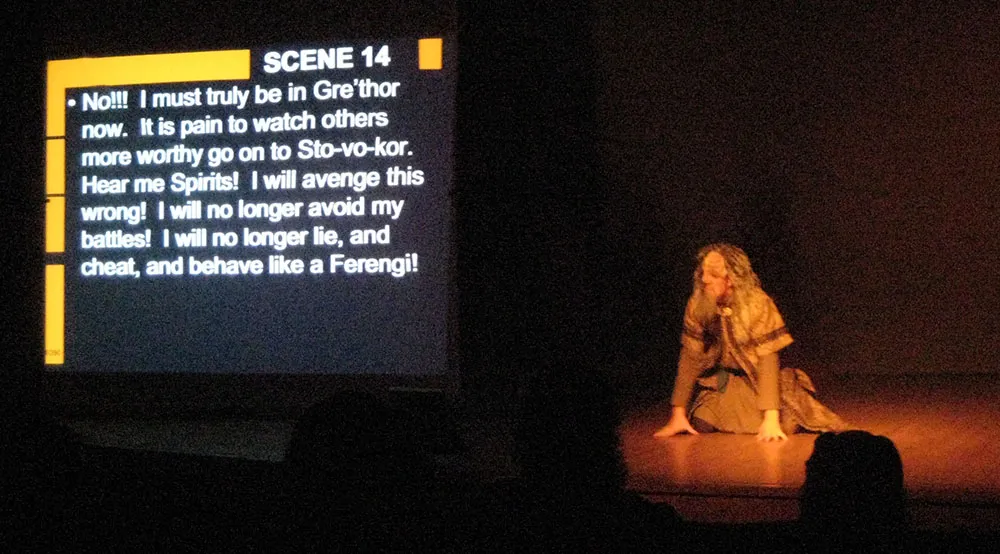
A funny coincidence: The part of SQuja’ was played by Michael Ooms, son of Richard Ooms who for years played Scrooge in the Guthrie Theater production of A Christmas Carol.
